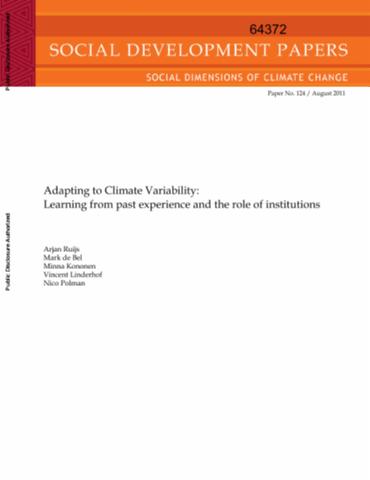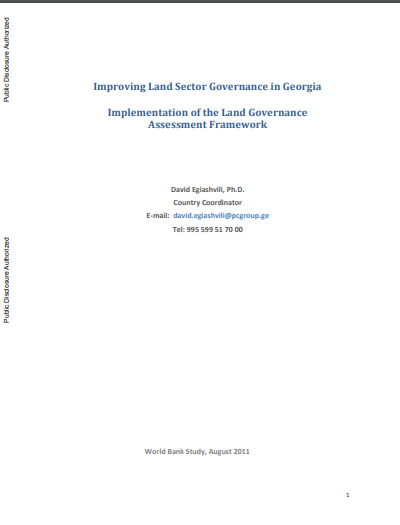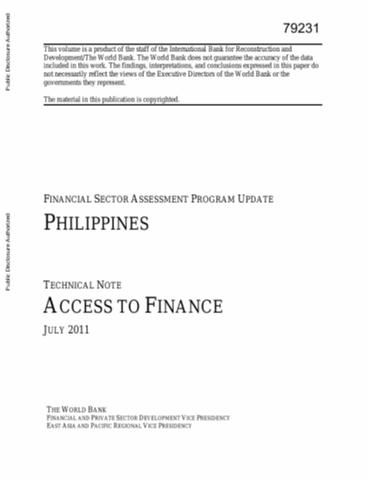The World Bank is a vital source of financial and technical assistance to developing countries around the world. We are not a bank in the ordinary sense but a unique partnership to reduce poverty and support development. The World Bank Group has two ambitious goals: End extreme poverty within a generation and boost shared prosperity.
- To end extreme poverty, the Bank's goal is to decrease the percentage of people living on less than $1.25 a day to no more than 3% by 2030.
- To promote shared prosperity, the goal is to promote income growth of the bottom 40% of the population in each country.
The World Bank Group comprises five institutions managed by their member countries.
The World Bank Group and Land: Working to protect the rights of existing land users and to help secure benefits for smallholder farmers
The World Bank (IBRD and IDA) interacts primarily with governments to increase agricultural productivity, strengthen land tenure policies and improve land governance. More than 90% of the World Bank’s agriculture portfolio focuses on the productivity and access to markets by small holder farmers. Ten percent of our projects focus on the governance of land tenure.
Similarly, investments by the International Finance Corporation (IFC), the World Bank Group’s private sector arm, including those in larger scale enterprises, overwhelmingly support smallholder farmers through improved access to finance, inputs and markets, and as direct suppliers. IFC invests in environmentally and socially sustainable private enterprises in all parts of the value chain (inputs such as irrigation and fertilizers, primary production, processing, transport and storage, traders, and risk management facilities including weather/crop insurance, warehouse financing, etc
For more information, visit the World Bank Group and land and food security (https://www.worldbank.org/en/topic/agriculture/brief/land-and-food-security1
Resources
Displaying 4586 - 4590 of 4906Land ownership for women prevents fears of uncertainty. Ethiopia—think EQUAL
In Ethiopia, with support from the World Bank and others, a program uses small booklets and simple photos to give women a clear hold on their own land. It's time to think EQUAL for women and girls.
Compulsory land acquisition and voluntary land conversion in Vietnam: the conceptual approach, land valuation and grievance redress mechanism
This publication is the product of a multi-year cluster analytical and advisory work on social and land conflict management of the World Bank office in Hanoi, which aimed to assist Ministry of Natural Resources and Environment (MoNRE) to improve the land acquisition and conversion process to achieve more sustainable development during the current rapid urbanization and industrialization process. (Ref: Orginal Source)
Adapting to Climate Variability
Adaptation to human-induced climate change is currently receiving a lot of attention in international development circles. But throughout human existence, natural resource-dependent people have exploited and coped with the effects of climate variability on the ecosystems from which they derive a living. Learning from this experience can help inform the design of appropriate policies for responding to human-induced climate change.
Improving land sector governance in Georgia : implementation of the Land Governance Assessment Framework (LGAF) (English)
The Land Governance Assessment Framework (LGAF) is a diagnostic tool to assess the status of land governance at country level using a participatory process that draws systematically on existing evidence and local expertise rather than on outsiders.
Philippines Financial Sector Assessment Program Update
This technical note on access to finance addresses six questions: 1) what is the access to and use of financial services in the Philippines, how does it vary, and how does it compare to other countries? 2) What financial services are available to different market segments? 3) How do different categories of financial institutions contribute to outreach, and what is their potential to expand outreach? 4) How does the regulatory environment support access to finance? 5) What financial infrastructure is available to make credit decisions?










